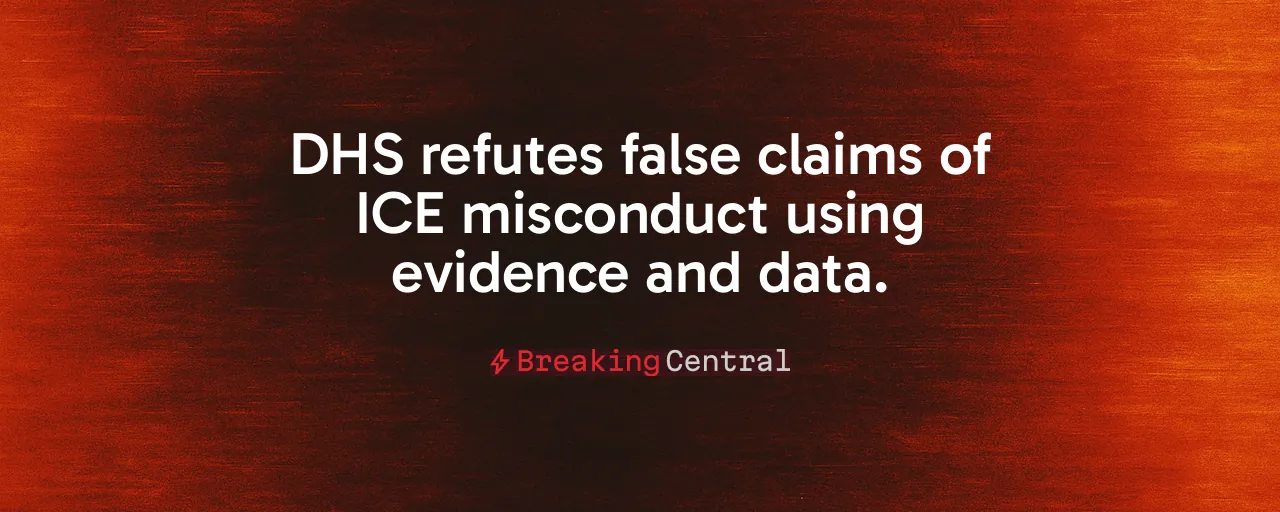A Barrage of False Claims
The Department of Homeland Security on June 30, 2025, released a detailed rebuttal to a slew of accusations leveled against Immigration and Customs Enforcement. From overcrowded detention centers to alleged racial profiling, the agency accused media outlets of spreading what it deems outright falsehoods. The stakes are high. These narratives shape public perception and, more critically, impact the safety of communities and officers on the ground.
The DHS report tackles over a dozen specific claims, each backed with data or firsthand accounts. For example, stories of starving detainees or neglected medical care are flatly untrue, the agency states, pointing to standards that surpass many state-run jails. Allegations of ICE targeting nannies at parks or arresting children with leukemia are fabrications, DHS insists, designed to vilify agents who risk their lives daily.
This clash concerns trust in institutions tasked with securing the nation's borders, extending beyond a mere dispute over facts. When misinformation spreads unchecked, it fuels division and undermines the rule of law. The question now is whether the public will see through the noise and demand accountability from those pushing distorted narratives.
The Real Targets of Enforcement
An examination of the numbers clarifies the situation. DHS data from President Trump's first 100 days in 2025 shows 70% of ICE arrests involved individuals with criminal convictions or pending charges. The priority is on individuals with criminal convictions or pending charges, such as gang members, murderers, and rapists, countering some media portrayals that suggest the focus is on hardworking families or innocent children. Secretary Kristi Noem has directed ICE to focus on the worst offenders, ensuring communities are safer.
Take the case of Marcelo Gomes, a Brazilian national detained in Massachusetts. Claims of solitary confinement at a Burlington facility fell apart when DHS clarified the site lacks such capabilities. Or consider Iris Dayana Monterroso-Lemus, whose alleged miscarriage due to neglect was debunked by records of extensive prenatal care, including hospital visits. These examples highlight a pattern: specific cases are twisted to paint a broader, misleading picture.
The reality of enforcement is not perfect. ICE's detainee population hit 59,000 in June 2025, exceeding funded capacity by 40%. Court injunctions slow deportations, creating bottlenecks. The solution involves streamlining removals and expanding capacity to handle those who pose genuine threats. Halting enforcement is not the answer.
Sanctuary Policies and Their Fallout
Local resistance, particularly from sanctuary jurisdictions, complicates matters. In Los Angeles, DHS notified the police department two days before a June 2025 operation, yet officers took two hours to respond to federal calls for help. During that delay, rioters assaulted ICE agents, slashed tires, and defaced public property. The media labeled these protests "peaceful," a characterization DHS disputes, citing Molotov cocktails and burning flags.
Sanctuary policies do not just hinder cooperation; they embolden lawlessness. DHS reports a 500% spike in assaults on ICE officers, linked to inflammatory rhetoric from politicians and activists. When local leaders prioritize shielding undocumented individuals over public safety, the consequences ripple outward, endangering both citizens and law enforcement.
Historical parallels abound. The 2018 "Occupy ICE" protests similarly escalated tensions, driven by misinformation. Today's solution lies in restoring federal-state partnerships, ensuring local agencies work with ICE to remove dangerous individuals swiftly and safely.
Protecting Communities, Not Profiling
Accusations of racial profiling are among the most damaging. DHS vehemently denies these, emphasizing that operations are "highly targeted" with pre-identified subjects. Officers follow strict protocols, asking specific questions to verify immigration status. Claims of U.S. citizens arrested due to skin color? DHS counters that such cases involve individuals obstructing or assaulting agents, like Omar Pulido-Bastida, a previously deported Mexican national facing federal charges for spitting on an ICE officer.
The broader context matters. Immigration enforcement has always been a balancing act. The 1980s saw detention expand amid refugee waves, and ICE's creation in 2003 formalized a robust system. Under Trump's first term, beds grew to 55,000 by 2019. Today's push for 100,000 beds reflects a commitment to national security, a measure not driven by prejudice. Critics often overlook that ICE's $34 billion budget dwarfs other federal law-enforcement agencies, underscoring its critical role.
Still, public trust hinges on transparency. Independent audits of detention conditions, as some neutral experts suggest, could bridge the gap between DHS's claims and public skepticism, ensuring accountability without derailing enforcement.
A Path to Order and Safety
The immigration debate will not cool anytime soon, but clarity is possible. DHS's June 2025 release underscores a commitment to truth over sensationalism. By debunking myths, such as the false claim of ICE staking out Dodgers Stadium or denying entry to a Norwegian over a meme, the agency seeks to refocus the conversation on facts. Most detainees are serious offenders, facilities meet high standards, and officers face unprecedented hostility.
Policy changes can reinforce this. Fast-tracking deportations with more immigration judges, hiring additional ICE agents, and rescinding "sensitive location" restrictions would enhance efficiency. Equally vital is cracking down on those who assault officers, ensuring they face stiff penalties. These steps prioritize community safety and respect for the law.
Ultimately, the nation deserves an immigration system that protects its citizens while upholding due process. Misinformation only muddies the waters. By grounding the debate in verifiable data and real-world outcomes, Americans can rally behind solutions that secure borders and strengthen communities.
